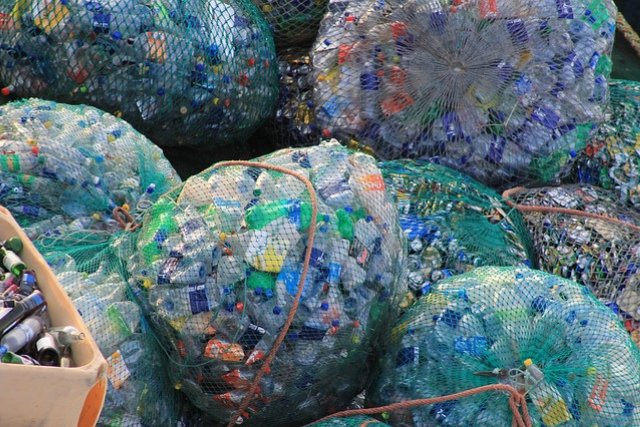Definition and Brief History of PET
PET is known as polyester and is the abbreviation of polyethylene terephthalate. Because PET is a lightweight plastic, it is used as food and beverage packaging. It is also transparent and strong, which is why it is the most widely used soft drink packaging material. Other uses for packaging include cooking oils, glass cleaners, salad dressings, and shampoos. Containers for ready meals that can be heated in a microwave oven are also made of PET, but because of the heat, the PET used here is a special type of PET.
Ethylene glycol and terephthalic acid are brought together to form a polymer chain, PET emerges. These PET chains are similar to spaghetti. Once the production process is complete, they are turned into pellets.
PET was first synthesized in the 1940s by Dupont and patented in 1950s . The synthetic fiber form of PET is polyester itself, which is used in the fiber and fabric industries around the world. It is called resin in packaging and other usage areas.
The reason why PET, which does not contain plasticizers and bisphenol-A, is used safely for food and beverages is that it has been approved by the FDA and other global health safety institutions as a result of many years of studies and tests. It is non-reactive with foodstuffs, resistant to microorganisms and efficient in use compared to glass packaging.
The PET material bales brought to the recycling facility are opened and the PET packages are separated from each other. PETs transferred to the conveyor belt are cleaned by steam and chemicals. Labels are removed. This is the prewash phase. This stage makes it easier to detect other contaminants with infrared technology. Separation straps and metal detectors do the same.
What is PET Recycling Process?
PET is ground after Pre-Washing, label removal and detection of contaminants. The purer the flake obtained, the higher the economic value of the recycled PET will be. Undoubtedly, there are many more contaminants that need to be cleaned from PET. The next step for this is the water bath. The materials are placed in water-filled containers, then washed and ventilated. At these stages, the use of disinfectant can also be beneficial. These three stages are actually processes of obtaining hygienic flakes.
Cleaning of remaining contaminants is continued with rinsing. This rinse also helps remove detergent residues. Before the final step, it is necessary to completely dry the PET.
This last but most important step is called melt filtration. A special filtering technology is used to completely clean the PET from contaminants. In this way, the purity of PET materials as recycled material is increased. Extruded PET goes through several screens. These screens can be metal mesh or laser filters. During this transition, the passage of unmelted particles is prevented by laser filters or metal nets. Pellets are obtained to be reused as the output of PET recycling completed in this way.

